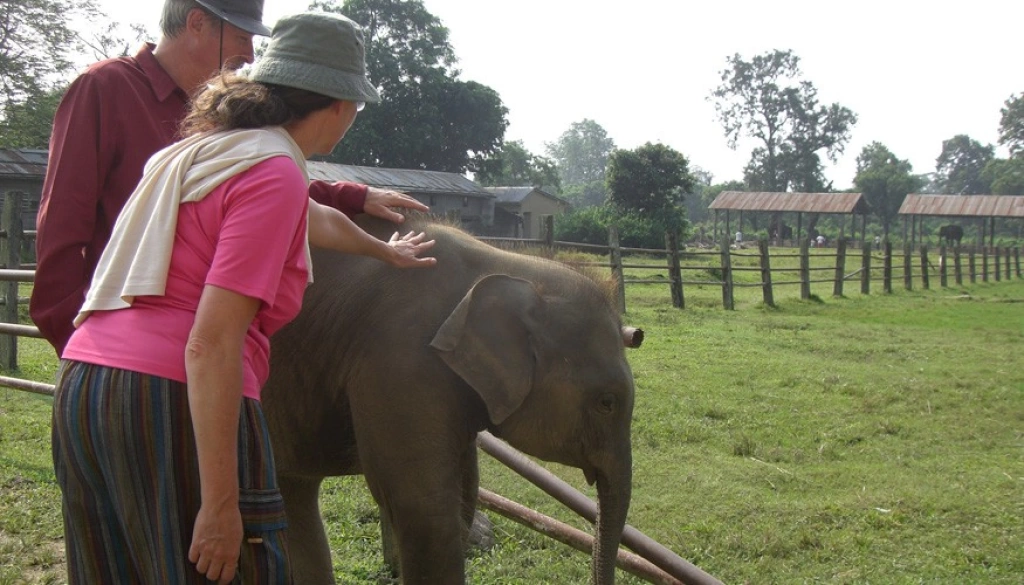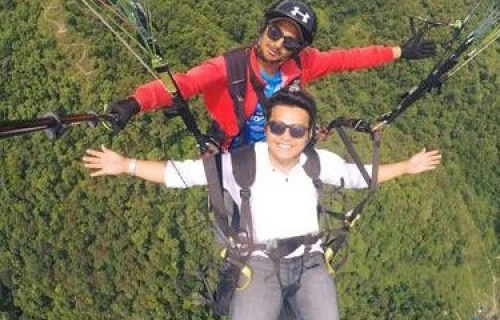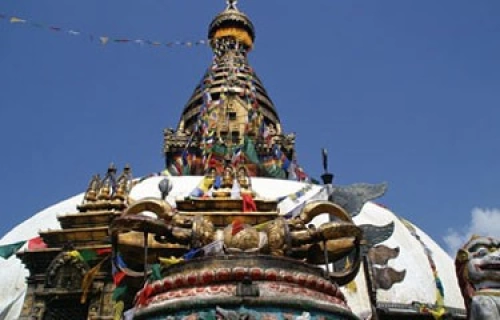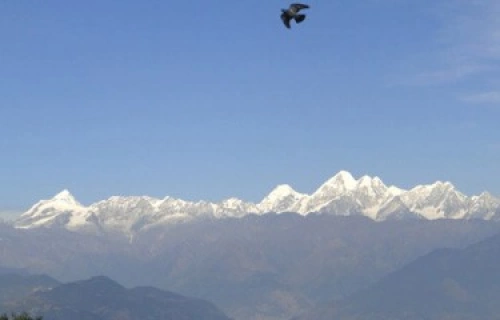About Chitwan Jungle Safari Tour
Chitwan National Park is only a five hour drive or a short flight from Kathmandu or Pokhara. Before you know it you can be in a small hand-carved wooden canoe rowing down the Rapti River watching crocodiles or Gharials bask in the sun on the banks as the water birds flit here and there. Chitwan National Park in the south of Nepal, is a belt of low land covered with dense subtropical jungles where wild animals live in their natural habitat. The name Chitwan is derived from the Tharu word “Chit” meaning dense and “Ban” meaning “forest”.
This huge and beautiful nature reserve protects 932 sq km of sal forest, water marshes and rippling grassland and a wealth of wildlife. There are 540 species of birds which have been identified in the park. A jungle safari through the Sal forest and open grass land may be done on the back of an elephant or in a jeep. The park is one of the last refuges of the endangered one-horned rhinoceros. A morning safari will likely lead you to the a watering hole, where you are likely to see spotted deer, wild boar, wild bison, monkeys, sloth bear,brightly brightly colored exotic birds, rhesus monkeys and maybe even a leopard, as there are sizeable populations of tigers, leopards. You might even see the magnificent Royal Bengal Tiger.
Later you will stop at the Elephant Orphanage where you get to pet and feed the friendly litte creature, less intimidating than the jungle animals for sure.
Another adventure is the elephant bath. Clambour on top of the girantic elephant and head down to the river for a bath. The elephants enjoy soaking you in muddy river water with a little slime from the elephants trunk mixed in !!
The town of Sauraha is a small but lively tourist centre perched beside a wide, slow-flowing river - with a wall of dense jungle looming on the far bank and the surrounding countryside is a peaceful patchwork of rice fields and villages of the indigenous Tharu tribe. The Tharu people have lived here longer than history can recall. Tharu Villages are like living museums, thatched roof houses are built of mud and clay and decorated with traditional art work. Most are one-room structures with no chimney and no windows, and sometimes even no door. Most of their life takes place outside. Pots hang above the fire on the porch, goats wonder around, and no one seems to be in a hurry. Part of the cultural program is sure to be include a group in traditional colourful costumes and performing their customary stick dance.
Interestingly Tharu people lived in this naturally isolated enclave where malaria infested mosquitoes kept intruders at bay. The Tharu people have a natural immunity, a genetic predisposition acquired over centuries of living in this region. Malaria was eradicated in late 1950’s with the use of the infamous DDT. Unfortunately, the relief from mosquitoes was not without collateral damage, much of the jungle’s natural habitat perished with mosquitoes.
When planning a visit to Chitwan, try to give yourself enough time for several safaris. The wildlife is unpredictable and you cant rely on sightings every time. Two whole days in the park is really the minimum for wildlife spotting. Visitors enjoy the domesticated elephants at the Elephant Breeding Center. The Gharial Hatchery incubates and hatches eggs of the endangered Gangetic crocodiles to later release into the river.
Private Tours are avialble to start instantly. Group departs when we have minimum 1 participant for any Tour.



